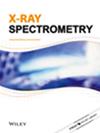新闻文章
IF 1.5
4区 物理与天体物理
Q3 SPECTROSCOPY
引用次数: 0
摘要
大型语言模型对x射线光谱学的可能影响(2023年3月17日)。最近发布的OpenAI生成预训练变压器4 (GPT-4)可能标志着人工智能实际应用的新时代的开始。与之前版本的OpenAI的大型语言模型(LLM)相比,即使在基于文本的聊天系统中,它在处理图像方面的功能也令人惊讶。在这个已经存档为Youtube视频(https://www.youtube.com/live/outcGtbnMuQ?feature=share)的演示中,聊天系统可以处理带有草图的手写笔记的截图图像,并可以立即将其转换为html代码。然后可以创建一个新的Web页面。此外,推理能力也比之前的版本有了很大的提升,之前的版本不是很好;以前的ChatGPT似乎只给出了26%的初中数学问题的正确答案(例如,参见Simon Frieder等人的“ChatGPT的数学能力”,https://arxiv.org/abs/2301.13867)。新版本似乎要好得多,现在在税收计算和律师考试问题上相当出色。总的来说,基于文本的工作能力比以往任何时候都要好。可以处理的字符数量增加了,整体处理质量提高了。Jerome Workman, Jr.和Howard Mark在文章中描述了最近关于人工智能在光谱学中的应用的有趣讨论之一,“分析光谱学中的人工智能,第一部分:基本概念和讨论”,光谱学,38,(2),13-22(2023)。https://doi.org/10.56530/spectroscopy.og4284z8。一些相关的内容也在播客中讨论过,analytical Speaking播客第9集,“自动化先进的化学计量方法用于数据处理”(https://www.spectroscopyonline.com/view/ep-9-automating-advanced-chemometric-methods-for-data-processing)。由于目前的人工智能在处理数十亿张图像方面更加强大,因此在一段时间内,基于图像的科学应用可能会领先(例如,参见张磊和邵绍峰,“基于图像的机器学习用于材料科学”,Journal of Applied Physics 132, 100701(2022)。https://doi.org/10.1063/5.0087381;Samantha Phan和Christine K. Luscombe,“海洋微塑料建模和机器学习工具的最新趋势:长期微塑料监测的潜力”,应用物理学报133,020701(2023)。https://doi.org/10.1063/5.0126358)。GPT-4公布的同一天,由Open AI前员工创立的竞争公司Anthropic Inc也发布了Claude。它已经在诸如Notion、Quora和DuckDuckGo等系统上的私有系统中进行了测试,并且得到了很好的好评。法学硕士及其应用程序(如聊天机器人)将比以前使用得更频繁。另一方面,系统就像一个黑盒子,因此我们在考虑一些实际用途时需要小心(例如,参见Noah Giansiracusa,“三种简单的方法使AI聊天机器人更安全”,科学美国人,2023年3月17日,https://www.scientificamerican.com/article/three-easy-ways-to-make-ai-chatbots-safer/)。本文章由计算机程序翻译,如有差异,请以英文原文为准。
News Article
Possible impacts of Large Language Models on X-ray spectroscopy (March 17, 2023). Recent announcement of releasing OpenAI's Generative Pretrained Transformer 4 (GPT-4) could mark the beginning of a new era of the practical application of artificial intelligence. Compared with the previous versions of OpenAI's Large Language Models (LLM), its function in handling the images even in the text-based chat system is surprising. In the presentation, which has been archived as a Youtube video (https://www.youtube.com/live/outcGtbnMuQ?feature=share), the chat system can handle a screenshot image of a handwriting note with some sketch, and can instantly transform it into an html code. Then one can create a new Web page. In addition, the reasoning ability has been upgraded considerably from the previous version, which had not been very good; previous ChatGPT seems to give the correct answer only to 26% of the junior high school level mathematics problems (see, for example, Simon Frieder et al., “Mathematical Capabilities of ChatGPT”, https://arxiv.org/abs/2301.13867). The new version seems to be much better and is now quite good at the tax calculation and the bar exam problem. Generally, the ability of text-based job has become further better than ever. The number of characters that can be handled has increased, and overall processing has become higher quality. One of the recent interesting discussions on the application of artificial intelligence to spectroscopy has been described in the article, by Jerome Workman, Jr., and Howard Mark, “Artificial Intelligence in Analytical Spectroscopy, Part I: Basic Concepts and Discussion”, Spectroscopy, 38, (2), 13–22 (2023). https://doi.org/10.56530/spectroscopy.og4284z8. Some of the related contents have been also discussed in the podcast, Analytically Speaking Podcast Episode 9, “Automating Advanced Chemometric Methods for Data Processing” (https://www.spectroscopyonline.com/view/ep-9-automating-advanced-chemometric-methods-for-data-processing). As the present artificial intelligence is more powerful in handling billions of images, for a while, image-based scientific applications could be preceding (see, for example, Lei Zhang and Shaofeng Shao, “Image-based machine learning for materials science”, Journal of Applied Physics 132, 100701 (2022). https://doi.org/10.1063/5.0087381; Samantha Phan and Christine K. Luscombe, “Recent trends in marine microplastic modeling and machine learning tools: Potential for long-term microplastic monitoring”, Journal of Applied Physics 133, 020701 (2023). https://doi.org/10.1063/5.0126358). On the same day of the announcement of GPT-4, Anthropic Inc, which is a rival company founded by former Open AI employees, released Claude. It has been tested in private systems on systems such as Notion, Quora, and DuckDuckGo, and has been very well received. The LLM and its application such as chatbots will be used more frequently than before. On the other hand, the system is like a black box, and therefore we will need to be careful when considering some real use (see, for example, Noah Giansiracusa, “Three Easy Ways to Make AI Chatbots Safer”, Scientific American, March 17, 2023, https://www.scientificamerican.com/article/three-easy-ways-to-make-ai-chatbots-safer/).
求助全文
通过发布文献求助,成功后即可免费获取论文全文。
去求助
来源期刊

X-Ray Spectrometry
物理-光谱学
CiteScore
3.10
自引率
8.30%
发文量
38
审稿时长
6-12 weeks
期刊介绍:
X-Ray Spectrometry is devoted to the rapid publication of papers dealing with the theory and application of x-ray spectrometry using electron, x-ray photon, proton, γ and γ-x sources.
Covering advances in techniques, methods and equipment, this established journal provides the ideal platform for the discussion of more sophisticated X-ray analytical methods.
Both wavelength and energy dispersion systems are covered together with a range of data handling methods, from the most simple to very sophisticated software programs. Papers dealing with the application of x-ray spectrometric methods for structural analysis are also featured as well as applications papers covering a wide range of areas such as environmental analysis and monitoring, art and archaelogical studies, mineralogy, forensics, geology, surface science and materials analysis, biomedical and pharmaceutical applications.
 求助内容:
求助内容: 应助结果提醒方式:
应助结果提醒方式:


